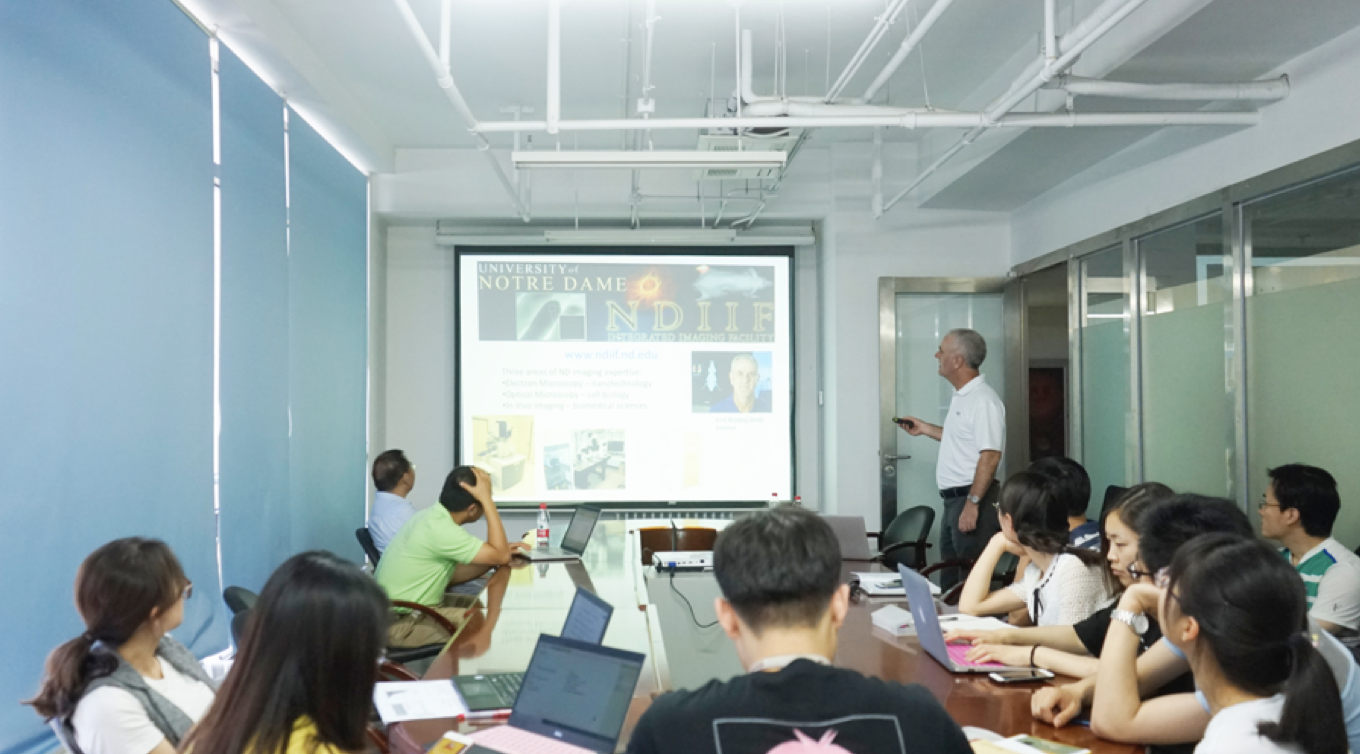题 目:Near-infrared Molecular Probes for Biological Imaging and Therapy
报告人:Professor Bradley D. Smith
Department of Chemistry and Biochemistry, University of Notre Dame, Indiana, 46556, USA (美国圣母大学)
Email: smith.115@nd.edu
Web: www.nd.edu/~bsmith3
时 间:6月1日(周五)下午2:00
地 点:王克桢楼1006会议室
主持人:戴志飞
报告内容摘要:
The lecture will describe new families of light absorbing molecular probes. Cell microscopists have a need for fluorophores with high photostability, extreme brightness, low phototoxicity, and user friendly bioconjugation. In contrast, in vivo imaging researchers and fluorescence guided surgeons strongly prefer fluorescent probes that emit low energy near-infrared light since it can penetrate through skin and tissue. A family of interlocked molecules called squaraine-rotaxanes are valuable as extremely bright and stable near-infrared fluorescent probes. A novel programmable pre-assembly method called Synthavidin produces fluorescent squaraine-rotaxanes probes with tunable multivalent binding properties for cancer imaging. In addition, a set of squaraine-rotaxane endoperoxides will be decribed that are both chemiluminescent and fluorescent. The chemiluminescence is thermally-activated (that is, no chemical or electrical stimulus is needed) which means that the probes can be stored at low temperature and they only become chemiluminescent when warmed to body temperature. Finally, there are targeted probes that absorb near-infrared laser light and generate heat for photothermal therapy of cancer.

报告人简介:
Bradley D. Smith is the Emil T. Hofman Professor of Chemistry and Biochemistry at the University of Notre Dame, Indiana, USA. He is also Director of the Notre Dame Integrated Imaging Facility that supports university imaging research. He is the author of 240 research publications and currently Associate Editor of the ACS journal Bioconjugate Chemistry. His research group develops molecular probes for detecting and treating cancer or microbial infections in living subjects. Dr Smith has invented a series of interlocked fluorescent and photothermal dye molecules and converted them into imaging probes for a wide range of applications in biomedical science, biotechnology, and nanotechnology.